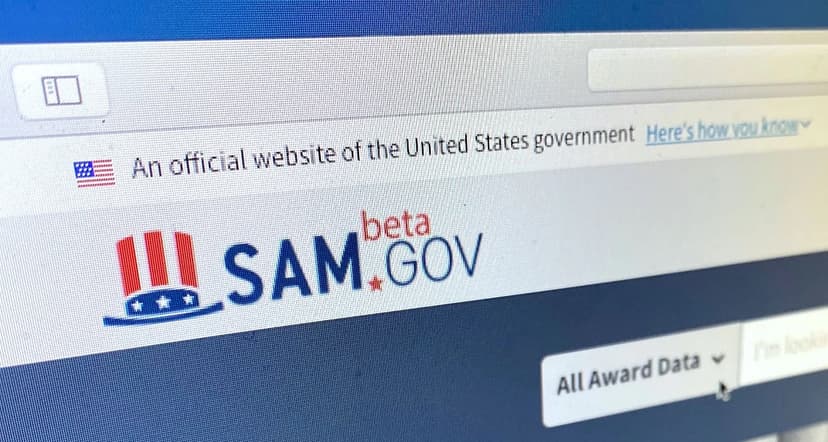How to Submit a Government Proposal: A Comprehensive Guide

Successfully submitting a government proposal requires strategic planning, precise compliance, and a clear presentation of your value. This guide offers a professional roadmap—structured around eligibility, opportunity assessment, proposal content, and quality control—to help you deliver a compelling bid.
🎥 Prefer video? Watch the full breakdown here:
Key Principles You Must Follow
- Strict compliance with instructions: Government solicitations include specific formatting, submission, and content requirements. Failure to comply can result in disqualification.
- Understand evaluation criteria: Sections L and M of most solicitations outline how your proposal will be evaluated. Tailor your response accordingly.
- Timely submission: Proposals submitted after the stated deadline are not accepted. Submit early to avoid technical or last-minute issues.
- Make it easy for reviewers: Structure your proposal clearly so contracting officers can quickly find required documents and information.
1. Prepare Before You Begin
- Verify Your SAM.gov Registration: Confirm that your UEI, CAGE code, and NAICS codes are current and appropriate for the opportunity.
- Understand Program Eligibility: Ensure your small business status or socioeconomic classification is properly registered.
- Research the Agency: Review past awards and agency procurement history to understand their priorities and preferences.
2. Analyze the Solicitation: Sections L, M & SOW
- Review Sections L (Instructions) and M (Evaluation Criteria): These sections outline what the agency expects and how proposals are scored.
- Break Down the Statement of Work (SOW) or Performance Work Statement (PWS): Identify all explicit and implicit requirements.
- Use a Compliance Matrix: Map each requirement to a corresponding section in your proposal for clarity and completeness. For more on structured proposal writing, see SamSearch’s guide on writing winning proposals in seven steps.
3. Structure Your Proposal for Maximum Clarity
A comprehensive government proposal typically includes:
- An Executive Summary reflecting your understanding of the agency’s needs and your solution.
- A Technical or Management Volume offering requirement-by-requirement narrative responses.
- A Cost Volume with justified unit pricing, labor rates, and cost breakdowns aligned to the SOW.
- Past Performance Documentation showcasing relevant prior work with measurable success.
- Representations & Certifications (Reps & Certs), often extracted from your SAM.gov profile or provided in the solicitation.
4. Complete Mandatory Forms and Materials
- Cover Page (SF‑1449): Populate required fields like solicitation number, NAICS code, offer due date/time, and contact information.
- Pricing Sheet: Provide precise unit pricing and totals according to agency instructions, ensuring alignment with deliverables.
- Q&A and Amendments: Submit questions before the stated deadline and acknowledge all official amendments in your final submission.
- Reps & Certs: Include complete and accurate certification documents as required by the solicitation.
5. Review and Finalize Before Submission
- Use Tiered Review (e.g. Pink‑Red‑Gold Teams): Begin with structural checks, proceed to content and accuracy reviews, and finalize with executive approval.
- Submit Early: Complete your upload or email submission at least 24 hours before the deadline to avoid technical issues.
- Check File Naming & Formatting: Confirm that all submission files meet solicitation standards—PDF format, correct naming conventions, page limits, etc.
Sample Process Summary Table
| Step | Description |
|---|---|
| Find Contract | Search SAM.gov or platforms like SamSearch |
| Download Solicitation | Obtain complete RFP, RFQ, or IFB with all instructions |
| Cover Page (SF1449) | Fill out required sections accurately |
| Pricing | Use correct pricing structure; align with scope |
| Submit Questions | Email questions early, referencing the solicitation number |
| Amendments | Track and acknowledge all solicitation updates |
| Reps & Certs | Include certifications from SAM or solicitation forms |
| Submit Proposal | Send via specified method before the deadline |
Q&A Section
What is SF1449?
SF1449 is a government-issued form used as the cover page for many solicitations. It must be filled out accurately and included as the first page of your proposal.
What are Reps & Certs?
These are legal declarations submitted with your proposal that confirm your company’s eligibility and compliance with federal rules. They’re usually drawn from your SAM.gov profile or filled directly into the solicitation documents.
Do I have to acknowledge amendments?
Yes. If the government issues an amendment, it becomes part of the solicitation. You must acknowledge all amendments in your proposal.
What is a compliance matrix and why is it critical?
A compliance matrix ensures every requirement in the solicitation is mapped and addressed in your proposal. It helps both you and evaluators confirm responsiveness.
How should I reflect evaluation criteria in Sections L and M?
Review each criterion carefully and align your narrative to show how you fulfill these specific scoring elements, whether price, technical merit, or past performance.
Why is past performance so important?
Agencies rely heavily on evidence of prior success. Provide examples with concrete metrics and outcomes to demonstrate your capability.
Is a proposal considered responsive even if it's near-perfect but missing one small item?
No. A responsive proposal must comply with all essential elements of the solicitation. Even a minor omission—such as failing to acknowledge an amendment—can result in disqualification.
Can I reuse portions of one proposal for another opportunity?
Yes and no. While you can reuse standard components (e.g., company overview or past performance summaries), each proposal must be tailored to the specific solicitation’s requirements and evaluation criteria. For a step‑by‑step framework, refer to SamSearch’s guide on writing effective government proposals.
Final Thoughts
Crafting a winning government proposal hinges on detailed compliance, clear structuring, and a strong alignment between your offering and agency needs. Plan strategically, use tools like compliance matrices and structured reviews, and tailor each section of your proposal to the solicitation’s scoring factors. With deliberate preparation, you’ll submit proposals that stand out for professionalism and responsiveness.
About Samsearch
Samsearch is an all-in-one platform that streamlines the entire government contracting process. Our solution brings together discovery, management, compliance, and proposal drafting — eliminating the need for multiple disjointed government contracting softwares.













